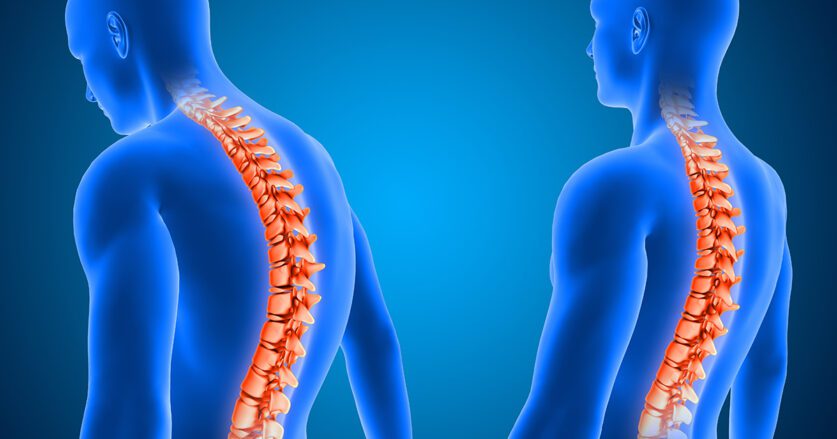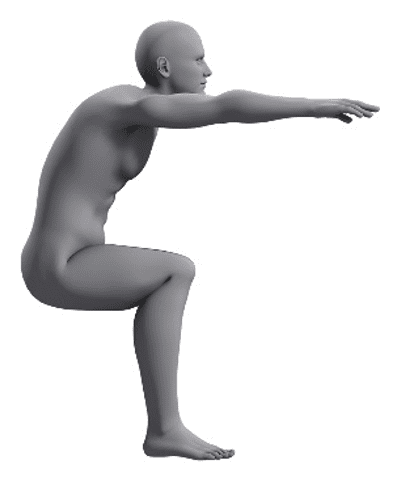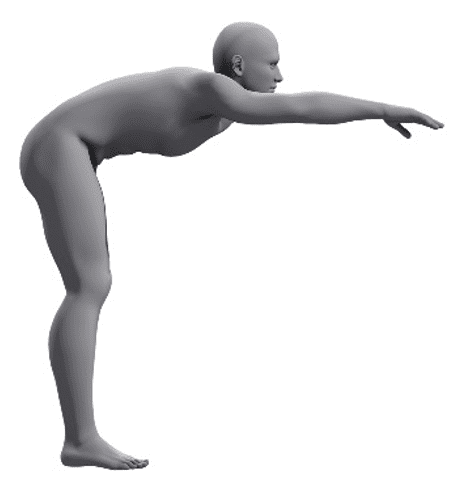Call Us Now1-800-414-2174


By Richard Bunch, PhD, PT, CBES & Trevor Bardarson, PT, OCS, CBES
 For many years now Trevor and I have lectured world-wide about the harmful effects of various poor work postures. One of the most common stressful work postures involves working with the head positioned forward of the body while flexed as exists when looking down while texting. In fact, due to this posture causing so much neck pain, healthcare providers commonly refer to the condition clinically as “text neck”.
For many years now Trevor and I have lectured world-wide about the harmful effects of various poor work postures. One of the most common stressful work postures involves working with the head positioned forward of the body while flexed as exists when looking down while texting. In fact, due to this posture causing so much neck pain, healthcare providers commonly refer to the condition clinically as “text neck”.
When the head is positioned forward of the body and flexed, the weight of the head creates much more leverage force at the base of the neck than if the head and neck are held more erect. Holding the head forward of the body activates posterior neck muscles to support the weight of the head that in turn create a greater force of contraction that increases compression on lower cervical discs. Over time this can lead to disc herniations, most commonly at the lower C5-6 and C6-7 levels.
The Forward Head Bifocal Posture
An even more stressful and dangerous posture involves damaging the neck by working with the head forward of the body combined with bifocal posture (tilting the chin up to look through the lower lens of bifocal glasses). The stress of this work behavior is made worse by simultaneously sitting slumped with forward head posture. Sitting slumped and bending forward at the waist while standing will also significantly stress the lower back. This posture also occurs in field work when bending forward to reach into equipment while the head is extended up to look straight ahead.
Forward head posture combined with upper neck extension is particularly dangerous as it causes compression on the upper cervical facet joints and vertebral arteries located at the base of the skull. This can lead to facet arthropathy, cervical bone spurs, and injury to the vertebral arteries. With prolonged postural compression of the vertebral arteries, inflammation of the arterial wall can occur. Resulting spasms (vasospasms) of the vertebral arteries can cause symptoms such as headaches. In addition, chronic inflammation of the vertebral arteries can potentially lead to clotting and/or plaque formation, resulting in vertigo or dizziness and potentially, in rare cases, a stroke. Clinical cases that support a vertebral artery stroke related to postural compression include the “beauty parlor stroke” and the “bow hunter stroke”. Both can be googled to learn more about how these two types of strokes have been related to mechanical compression of the vertebral arteries.
 Although our focus on the potential harmful effects of forward head posture has too often been focused just on the office worker, we would be remiss not to reemphasize how this stressful posture is also a big problem in field work. One of the most common stressful work postures in the field involves reaching out to use a tool or operate equipment (e.g., a wheel valve ) while bending the trunk forward. When workers are reaching out to work with their hands while bent forward at the waist, they are usually looking straight ahead or upward. This posture requires extension of the neck. Consequently, similar to the office worker sitting slumped with forward head bifocal posture, there will be increased mechanical stress on upper facet joints, the vertebral arteries, and on the lower intervertebral discs of the cervical spine. If that wasn’t enough to cause concern, reaching our while being bent forward results in the humeral head of the arm becoming impinged on the overlying bony hook (acromion) of the scapula (shoulder blade). This shoulder impingement can damage the underlying rotator cuff and subdeltoid bursa. Thus, field workers who work in this stressful posture can, over time, experience increased occurrences of degenerative arthritis of the neck (cervical spondylosis), disc herniations in both the lumbar and cervical regions of the spine, nerve root irritations, rotator cuff tears, subacromial bursitis, and yes, vertebral artery damage.
Although our focus on the potential harmful effects of forward head posture has too often been focused just on the office worker, we would be remiss not to reemphasize how this stressful posture is also a big problem in field work. One of the most common stressful work postures in the field involves reaching out to use a tool or operate equipment (e.g., a wheel valve ) while bending the trunk forward. When workers are reaching out to work with their hands while bent forward at the waist, they are usually looking straight ahead or upward. This posture requires extension of the neck. Consequently, similar to the office worker sitting slumped with forward head bifocal posture, there will be increased mechanical stress on upper facet joints, the vertebral arteries, and on the lower intervertebral discs of the cervical spine. If that wasn’t enough to cause concern, reaching our while being bent forward results in the humeral head of the arm becoming impinged on the overlying bony hook (acromion) of the scapula (shoulder blade). This shoulder impingement can damage the underlying rotator cuff and subdeltoid bursa. Thus, field workers who work in this stressful posture can, over time, experience increased occurrences of degenerative arthritis of the neck (cervical spondylosis), disc herniations in both the lumbar and cervical regions of the spine, nerve root irritations, rotator cuff tears, subacromial bursitis, and yes, vertebral artery damage.
Therefore, it is critical from an ergonomic perspective to conduct observational postural analyses as described by NIOSH (https://www.cdc.gov/niosh/docs/2014-131/pdfs/2014-131.pdf). Help ensure that office workers sit correctly in properly adjusted ergonomic chairs without forward head posture and reaching. This can be facilitated by ensuring that the computer monitor is located within the focal range, and that the position the keyboard and mouse are close enough to the body to avoid reaching. However, it is not sufficient to just set someone up in an ergonomically optimum posture. One must observe and diligently correct the “behavior” of slumped postures among the work force on an ongoing basis.
In the field, ergonomic interventions should focus on identifying and correcting work designs that force or facilitate trunk flexed postures, particularly when work requires simultaneous reaching. Remove obstacles that force bending at the waist and reaching while working. Provide knee pads or cushions to kneel on when kneeling will offset or prevent the need to work while standing with the back flexed. In addition, have workers perform postural relief exercises for the back, neck and shoulders to help offset poor postures that are not avoidable.
In Need of Observational Postural Analyses and/or Ergonomic Assessments? Contact WorkSaver Employee Testing Systems (985) 853-2214 or e-mail amyb@worksaversystems.com
References:
WorkSaver Employee Testing Systems 478 Corporate Dr. Houma, LA 70360
![]()